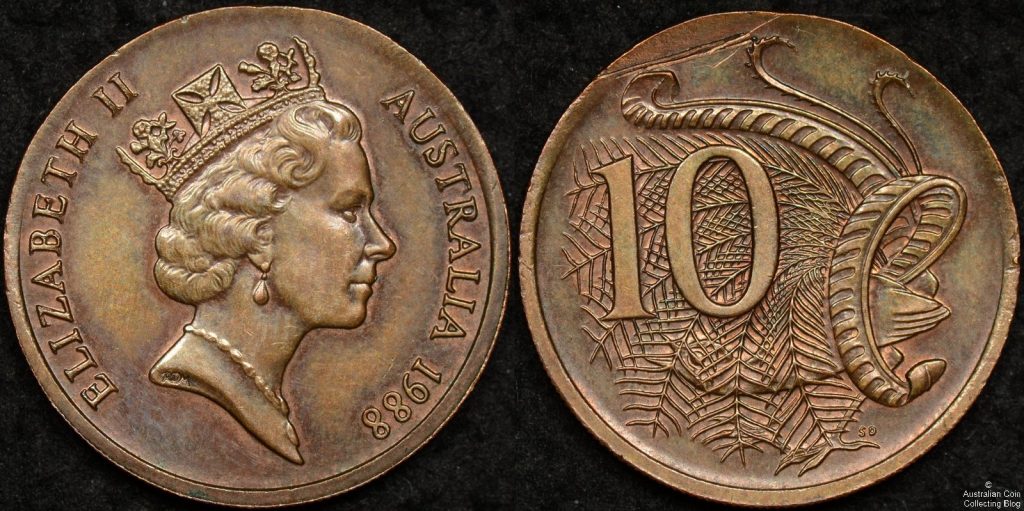As originally published in Australasian Coin and Banknote Magazine February 2021
What Went Wrong -error coins that escaped the mint
Leave an Australian copper nickel coin (5c, 10c, 20c, or 50c) lying on the ground for several months or years or perhaps bury it for some time and it will often tone a distinctive brown earthy colour. On first glance the coin shown here has this type of colouring and perhaps it would be spent by a member of the public without too much thought. This coin is quite different though, it is clearly uncirculated and shows considerable mint bloom, similar perhaps to a bronze coin. We knew it was something special and an XRF test confirmed that this coin was not struck on a cupro-nickel blank but in fact a copper alloy blank intended for two cent pieces.
The coin weighs in at 5.16g well within tolerance of the nominal weight of a two cent coin. This is exactly half a gram less than a regular 10 cent coin. Could a 2 cent blank be struck by ten cent dies? The diameter of a 2c is about 2mm less than a 10 cent, so yes, a 2 cent blank could fit into the collar die intended to mint a 10 cent coin and be struck. But of course, the lower mass and smaller diameter would give rise to key indicators in the strike of the coin. Are these indicators present? Yes, indeed they are.
The obverse legends in particular ABETH II of ELIZABETH II exhibit fishtailing of the lettering, this is a sure sign of unconstrained radial metal flow due to the small blank not filling the collar entirely prior to being struck. You’ll also note that the rim is not fully formed for about one third of the circumference of the coin. This is another sign that the blank was both undersized and underweight. Sadly scratches on the reverse are tell-tales that this coin may have failed to exit the coin press and was helped along the way by an eager mint technician with a metal tool of some sort.
Wrong planchet errors are always highly sought after by collectors. Wrong planchet, off-metal errors are more visually appealing because they are obviously the wrong colour. Underweight, wrong planchet, off-metal errors are even more desirable because of the distinctive qualities of the strike that help establish their authenticity. This 1988 10c struck on a 2c blank fits all these criteria nicely and as such is a very desirable coin. Eagle-eyed readers might have noted a small cud on the top lip of the Queen’s portrait. This may allow the fastidious collector to find a regular copper nickel 1988 10 cent struck from the very same dies as this spectacular error. That would be a fine pair of coins to own!
Mark Nemtsas and Kathryn Harris own and run The Purple Penny coin shop in Adelaide and are passionate about error coins.


